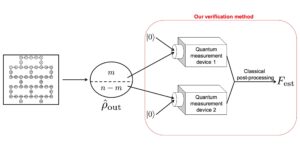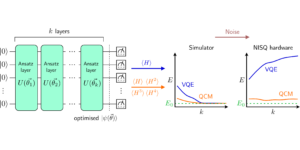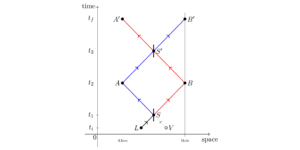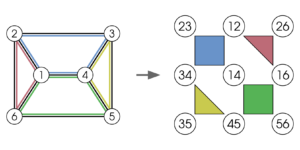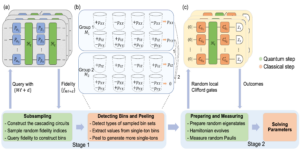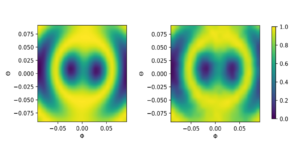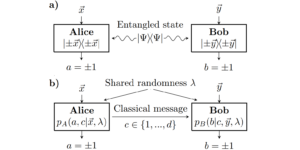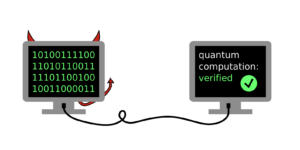1École de physique et d'astronomie, Université Monash, Victoria 3800, Australie
2Centre de recherche en informatique quantique Hon Hai, Taipei, Taïwan
3Física Teòrica: Informació i Fenòmens Quàntics, Departament de Física, Universitat Autònoma de Barcelona, 08193 Bellaterra (Barcelone), Espagne
Vous trouvez cet article intéressant ou souhaitez en discuter? Scite ou laisse un commentaire sur SciRate.
Abstract
La mécanique statistique de l'équilibre fournit des outils puissants pour comprendre la physique à l'échelle macro. Cependant, la question demeure de savoir comment cela peut être justifié sur la base d'une description quantique microscopique. Ici, nous étendons les idées de la mécanique statistique quantique à l'état pur, qui se concentrent sur les statistiques temporelles uniques, pour montrer l'équilibration de processus quantiques isolés. À savoir, nous montrons que la plupart des observables multi-temps pour des temps suffisamment grands ne peuvent pas distinguer un processus de non-équilibre d'un processus d'équilibre, à moins que le système ne soit sondé un très grand nombre de fois ou que l'observable soit particulièrement fine. Un corollaire de nos résultats est que la taille de la non-Markovianité et d'autres caractéristiques multitemporelles d'un processus hors d'équilibre s'équilibrent également.
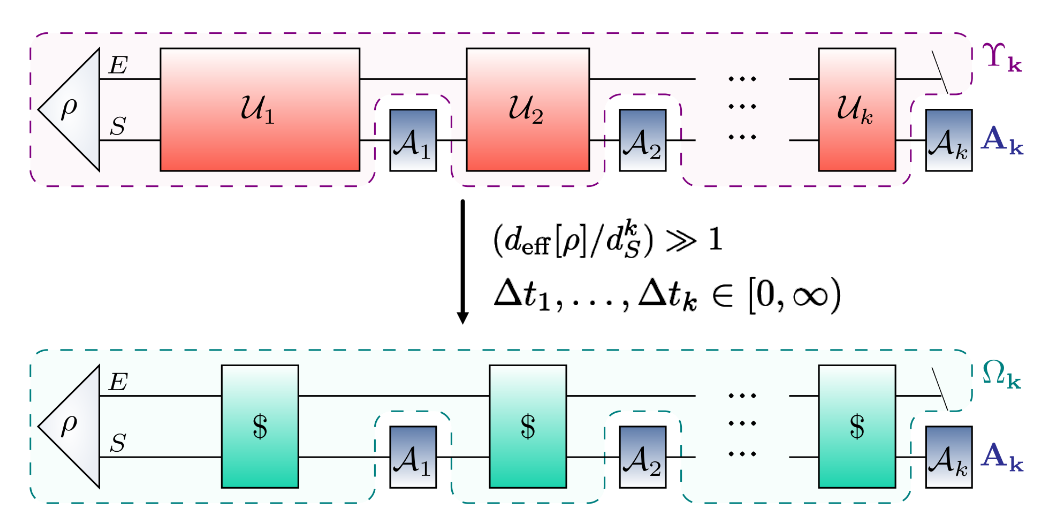
Image en vedette : une valeur d'attente multitemporelle arbitraire et dépendante du temps $langle textbf{A}_textbf{k} rangle_{Upsilon} (Delta t_1, dots,Delta t_k ) $ est affichée (en haut), qui peut être calculée à partir d'un processus quantique tenseur $Upsilon$, composé de superopérateurs d'évolution unitaire $mathcal{U}_i$ et d'un état initial $rho$. Pour un système où l'état initial chevauche de manière significative de nombreux états propres d'énergie, si le système n'est pas sondé trop de fois $k$, nous montrons qu'en moyenne cette fonction de corrélation multitemporelle est indiscernable d'une quantité d'équilibre indépendante du temps (en bas), $langle textbf{A}_textbf{k} range_{Omega}$.
Résumé populaire
► Données BibTeX
► Références
A. Rivas et SF van Huelga, Open Quantum Systems (Springer-Verlag, 2012).
https://doi.org/10.1007/978-3-642-23354-8
I. Rotter et JP Bird, Rep. Prog. Phys. 78, 114001 (2015).
https://doi.org/10.1088/0034-4885/78/11/114001
N. Pottier, Physique statistique hors équilibre : Processus irréversibles linéaires, Oxford Graduate Texts (Oxford University Press, 2010).
R. Kubo, Rép. Prog. Phys. 29, 255 (1966).
https://doi.org/10.1088/0034-4885/29/1/306
U. Weiss, Quantum Dissipative Systems, 4e éd. (World Scientific, 2012).
https: / / doi.org/ 10.1142 / 8334
G. Stefanucci et R. van Leeuwen, Théorie à plusieurs corps sans équilibre des systèmes quantiques: une introduction moderne (Cambridge University Press, 2013).
https: / / doi.org/ 10.1017 / CBO9781139023979
M. Lax, Phys. Rév.157, 213 (1967).
https: / / doi.org/ 10.1103 / PhysRev.157.213
FA Pollock, C. Rodríguez-Rosario, T. Frauenheim, M. Paternostro et K. Modi, Phys. Rév.A 97, 012127 (2018a).
https: / / doi.org/ 10.1103 / PhysRevA.97.012127
FA Pollock, C. Rodríguez-Rosario, T. Frauenheim, M. Paternostro et K. Modi, Phys. Rev. Lett. 120, 040405 (2018b).
https: / / doi.org/ 10.1103 / PhysRevLett.120.040405
L. Li, MJ Hall et HM Wiseman, Phys. Rep. 759, 1 (2018), concepts de non-Markovianité quantique : Une hiérarchie.
https: / / doi.org/ 10.1016 / j.physrep.2018.07.001
S. Milz, F. Sakuldee, FA Pollock et K. Modi, Quantum 4, 255 (2020a).
https://doi.org/10.22331/q-2020-04-20-255
S. Milz et K. Modi, PRX Quantum 2, 030201 (2021).
https: / / doi.org/ 10.1103 / PRXQuantum.2.030201
N. Dowling, P. Figueroa-Romero, F. Pollock, P. Strasberg et K. Modi, « Équilibration des processus quantiques non markoviens à intervalles de temps finis », (2021), arXiv : 2112.01099 [quant-ph].
https:///doi.org/10.48550/arXiv.2112.01099
arXiv: 2112.01099
N. Linden, S. Popescu, AJ Short et A. Winter, Phys. Rév. E 79, 061103 (2009).
https: / / doi.org/ 10.1103 / PhysRevE.79.061103
C. Neuenhahn et F. Marquardt, Phys. Rév. E 85, 060101(R) (2012).
https: / / doi.org/ 10.1103 / PhysRevE.85.060101
L. Campos Venuti et P. Zanardi, Phys. Rév. A 81, 022113 (2010).
https: / / doi.org/ 10.1103 / PhysRevA.81.022113
P. Bocchieri et A. Loinger, Phys. Rev. 107, 337 (1957).
https: / / doi.org/ 10.1103 / PhysRev.107.337
C. Gogolin et J. Eisert, Rep. Prog. Phys. 79, 056001 (2016).
https://doi.org/10.1088/0034-4885/79/5/056001
LC Venuti, "Le temps de récurrence en mécanique quantique," (2015), arXiv:1509.04352 [quant-ph].
https:///doi.org/10.48550/arXiv.1509.04352
arXiv: 1509.04352
P. Reimann, Phys. Rév. Lett. 101, 190403 (2008).
https: / / doi.org/ 10.1103 / PhysRevLett.101.190403
UN. M. Alhambra, J. Riddell et LP García-Pintos, Phys. Rév. Lett. 124, 110605 (2020).
https: / / doi.org/ 10.1103 / PhysRevLett.124.110605
P. Figueroa-Romero, FA Pollock et K. Modi, Commun. Phys. 4, 127 (2021).
https: / / doi.org/ 10.1038 / s42005-021-00629-w
J. Gemmer, M. Michel et G. Mahler, Quantum Thermodynamics: Emergence of Thermodynamic Behavior Within Composite Quantum Systems, Lecture Notes in Physics (Springer Berlin Heidelberg, 2009).
https: / / doi.org/ 10.1007 / b98082
L. D'Alessio, Y. Kafri, A. Polkovnikov et M. Rigol, Adv. Phys. 65, 239 (2016).
https: / / doi.org/ 10.1080 / 00018732.2016.1198134
T. Mori, TN Ikeda, E. Kaminishi et M. Ueda, J. Phys. Chauve souris. Mol. Opter. 51, 112001 (2018).
https: / / doi.org/ 10.1088 / 1361-6455 / aabcdf
F. Costa et S. Shrapnel, New J. Phys. 18, 063032 (2016).
https://doi.org/10.1088/1367-2630/18/6/063032
G. Chiribella, GM D'Ariano et P. Perinotti, Phys. Rev. A 80, 022339 (2009).
https: / / doi.org/ 10.1103 / PhysRevA.80.022339
H. Tasaki, Phys. Rév. Lett. 80, 1373 (1998).
https: / / doi.org/ 10.1103 / PhysRevLett.80.1373
AJ Short, nouveau J. Phys. 13, 053009 (2011).
https://doi.org/10.1088/1367-2630/13/5/053009
M. Ueda, Nat. Rév. Phys. 2, 669 (2020).
https: / / doi.org/ 10.1038 / s42254-020-0237-x
EB Davies et JT Lewis, Commun. Mathématiques. Phys. 17, 239 (1970).
https: / / doi.org/ 10.1007 / BF01647093
G. Chiribella, GM D`Ariano et P. Perinotti, EPL (Europhysics Letters) 83, 30004 (2008).
https://doi.org/10.1209/0295-5075/83/30004
L. Hardy, J. Phys. A-Math. Théor. 40, 3081 (2007).
https://doi.org/10.1088/1751-8113/40/12/s12
L. Hardy, Philos. TR Soc. A 370, 3385 (2012).
https: / / doi.org/ 10.1098 / rsta.2011.0326
L. Hardy, « Relativité générale opérationnelle : possibiliste, probabiliste et quantique », (2016), arXiv : 1608.06940 [gr-qc].
https:///doi.org/10.48550/arXiv.1608.06940
arXiv: 1608.06940
J. Cotler, C.-M. Jian, X.-L. Qi et F. Wilczek, J. High Energy Phys. 2018, 93 (2018).
https: / / doi.org/ 10.1007 / JHEP09 (2018) 093
D. Kretschmann et RF Werner, Phys. Rev. A 72, 062323 (2005).
https: / / doi.org/ 10.1103 / PhysRevA.72.062323
F. Caruso, V. Giovannetti, C. Lupo et S. Mancini, Rév. Mod. Phys. 86, 1203 (2014).
https: / / doi.org/ 10.1103 / RevModPhys.86.1203
C. Portmann, C. Matt, U. Maurer, R. Renner et B. Tackmann, IEEE Transactions on Information Theory 63, 3277 (2017).
https: / / doi.org/ 10.1109 / TIT.2017.2676805
S. Shrapnel, F. Costa et G. Milburn, New J. Phys. 20, 053010 (2018).
https: / / doi.org/ 10.1088 / 1367-2630 / aabe12
O. Oreshkov, F. Costa et Č. Brukner, Nat. Commun. 3, 1092 (2012).
https: / / doi.org/ 10.1038 / ncomms2076
P. Strasberg, Phys. Rév. E 100, 022127 (2019a).
https: / / doi.org/ 10.1103 / PhysRevE.100.022127
C. Giarmatzi et F. Costa, Quantum 5, 440 (2021).
https://doi.org/10.22331/q-2021-04-26-440
P. Strasberg et A. Winter, Phys. Rév. E 100, 022135 (2019).
https: / / doi.org/ 10.1103 / PhysRevE.100.022135
P. Strasberg, Phys. Rév. Lett. 123, 180604 (2019b).
https: / / doi.org/ 10.1103 / PhysRevLett.123.180604
P. Strasberg et MG Díaz, Phys. Rév.A 100, 022120 (2019).
https: / / doi.org/ 10.1103 / PhysRevA.100.022120
S. Milz, D. Egloff, P. Taranto, T. Theurer, MB Plenio, A. Smirne et SF Huelga, Phys. Rév. X 10, 041049 (2020b).
https: / / doi.org/ 10.1103 / PhysRevX.10.041049
V. Chernyak, F. cv Šanda et S. Mukamel, Phys. Rév. E 73, 036119 (2006).
https: / / doi.org/ 10.1103 / PhysRevE.73.036119
GS Engel, TR Calhoun, EL Read, T.-K. Ahn, T. Mančal, Y.-C. Cheng, RE Blankenship et GR Fleming, Nature 446, 782 (2007).
https: / / doi.org/ 10.1038 / nature05678
F. Krumm, J. Sperling et W. Vogel, Phys. Rév. A 93, 063843 (2016).
https: / / doi.org/ 10.1103 / PhysRevA.93.063843
E. Moreva, M. Gramegna, G. Brida, L. Maccone et M. Genovese, Phys. Rév. D 96, 102005 (2017).
https: / / doi.org/ 10.1103 / PhysRevD.96.102005
HG Duan, VI Prokhorenko, RJ Cogdell, K. Ashraf, AL Stevens, M. Thorwart et RJD Miller, Proc Natl Acad Sci USA 114, 8493 (2017).
https: / / doi.org/ 10.1073 / pnas.1702261114
M. Ringbauer, F. Costa, ME Goggin, AG White et A. Fedrizzi, npj Quantum Information 4, 37 (2018).
https: / / doi.org/ 10.1038 / s41534-018-0086-y
GAL White, CD Hill, FA Pollock, LCL Hollenberg et K. Modi, Nature Communications 11, 6301 (2020).
https://doi.org/10.1038/s41467-020-20113-3
GAL White, FA Pollock, LCL Hollenberg, CD Hill et K. Modi, « De la physique à plusieurs corps à plusieurs temps », (2022), arXiv : 2107.13934 [quant-ph].
https:///doi.org/10.48550/arXiv.2107.13934
arXiv: 2107.13934
L. Knipschild et J. Gemmer, Phys. Rév. E 101, 062205 (2020).
https: / / doi.org/ 10.1103 / PhysRevE.101.062205
P. Taranto, FA Pollock et K. Modi, npj Quantum Information 7, 149 (2021).
https://doi.org/10.1038/s41534-021-00481-4
S. Milz, MS Kim, FA Pollock et K. Modi, Phys. Rév. Lett. 123, 040401 (2019).
https: / / doi.org/ 10.1103 / PhysRevLett.123.040401
D. Burgarth, P. Facchi, M. Ligabò et D. Lonigro, Phys. Rév. A 103, 012203 (2021a).
https: / / doi.org/ 10.1103 / PhysRevA.103.012203
D. Burgarth, P. Facchi, D. Lonigro et K. Modi, Phys. Rév. A 104, L050404 (2021b).
https:///doi.org/10.1103/PhysRevA.104.L050404
FGSL Brandão, E. Crosson, MB Şahinoğlu et J. Bowen, Phys. Rév. Lett. 123, 110502 (2019).
https: / / doi.org/ 10.1103 / PhysRevLett.123.110502
JM Deutsch, Phys. Rev. A 43, 2046 (1991).
https: / / doi.org/ 10.1103 / PhysRevA.43.2046
M. Srednicki, Phys. Rév.E 50, 888 (1994).
https: / / doi.org/ 10.1103 / PhysRevE.50.888
M. Srednicki, J. Phys. A-Mathématiques. Gen.32, 1163 (1999).
https://doi.org/10.1088/0305-4470/32/7/007
M. Rigol, V. Dunjko, V. Yurovsky et M. Olshanii, Phys. Rév. Lett. 98, 050405 (2007).
https: / / doi.org/ 10.1103 / PhysRevLett.98.050405
M. Rigol, V. Dunjko et M. Olshanii, Nature 452, 854 EP (2008).
https: / / doi.org/ 10.1038 / nature06838
CJ Turner, AA Michailidis, DA Abanin, M. Serbyn et Z. Papić, Nat. Phys. 14, 745 (2018).
https://doi.org/10.1038/s41567-018-0137-5
JM Deutsch, Rep. Prog. Phys. 81, 082001 (2018).
https://doi.org/10.1088/1361-6633/aac9f1
J. Richter, J. Gemmer et R. Steinigeweg, Phys. Rév. E 99, 050104(R) (2019).
https: / / doi.org/ 10.1103 / PhysRevE.99.050104
S. Milz, C. Spee, Z.-P. Xu, FA Pollock, K. Modi et O. Gühne, SciPost Phys. 10, 141 (2021).
https: / / doi.org/ 10.21468 / SciPostPhys.10.6.141
R. Dumcke, J. Math. Phys. 24, 311 (1983).
https: / / doi.org/ 10.1063 / 1.525681
P. Figueroa-Romero, K. Modi et FA Pollock, Quantum 3, 136 (2019).
https://doi.org/10.22331/q-2019-04-30-136
Alexei Kitaev, « Symposium de physique fondamentale du prix révolutionnaire 2015 », URL : https://breakthroughprize.org/Laureates/1/L3 (2014).
https:///breakthroughprize.org/Laureates/1/L3
M. Zonnios, J. Levinsen, MM Parish, FA Pollock et K. Modi, Phys. Rév. Lett. 128, 150601 (2022).
https: / / doi.org/ 10.1103 / PhysRevLett.128.150601
N. Dowling et K. Modi, «Chaos quantique = enchevêtrement spatio-temporel de la loi du volume», (2022), arXiv: 2210.14926 [quant-ph].
https:///doi.org/10.48550/ARXIV.2210.14926
arXiv: 2210.14926
G. Styliaris, N. Anand et P. Zanardi, Phys. Rév. Lett. 126, 030601 (2021).
https: / / doi.org/ 10.1103 / PhysRevLett.126.030601
AJ Short et TC Farrelly, New J. Phys. 14, 013063 (2012).
https://doi.org/10.1088/1367-2630/14/1/013063
A. Riera, C. Gogolin et J. Eisert, Phys. Rév. Lett. 108, 080402 (2012).
https: / / doi.org/ 10.1103 / PhysRevLett.108.080402
ASL Malabarba, LP García-Pintos, N. Linden, TC Farrelly et AJ Short, Phys. Rév. E 90, 012121 (2014).
https: / / doi.org/ 10.1103 / PhysRevE.90.012121
H. Wilming, TR de Oliveira, AJ Short et J. Eisert, « Temps d'équilibre dans les systèmes quantiques fermés à plusieurs corps », dans Thermodynamics in the Quantum Regime : Fundamental Aspects and New Directions, édité par F. Binder, LA Correa, C. Gogolin, J. Anders et G. Adesso (Springer International Publishing, Cham, 2018) p. 435–455.
https://doi.org/10.1007/978-3-319-99046-0_18
S. Milz, FA Pollock et K. Modi, Open Syst. Inf. Dyn. 24, 1740016 (2017).
https: / / doi.org/ 10.1142 / S1230161217400169
J. Watrous, La théorie de l'information quantique (Cambridge University Press, 2018).
https: / / doi.org/ 10.1017 / 9781316848142
MM Wilde, « Du classique à la théorie quantique de Shannon », (2011), arXiv : 1106.1445 [quant-ph].
https: / / doi.org/ 10.1017 / 9781316809976.001
arXiv: 1106.1445
J. Watrous, Quantum Inf. Calcul. 5 (2004), 10.26421/QIC5.1-6.
https: / / doi.org/ 10.26421 / QIC5.1-6
P. Taranto, S. Milz, FA Pollock et K. Modi, Phys. Rév. A 99, 042108 (2019).
https: / / doi.org/ 10.1103 / PhysRevA.99.042108
WR Inc., « Mathematica, version 12.3.1 », Champaign, Illinois, 2021.
J. Miszczak, Z. Puchała et P. Gawron, "Package Qi pour l'analyse des systèmes quantiques," (2011-).
https:///github.com/iitis/qi
Cité par
[1] Philipp Strasberg, « Classicalité sans (sans) décohérence : concepts, relation à la markovianité et approche de la théorie des matrices aléatoires », arXiv: 2301.02563, (2023).
[2] Philipp Strasberg, Teresa E. Reinhard et Joseph Schindler, « Tout, partout, tout à la fois : une démonstration numérique des premiers principes des histoires décohérentes émergentes », arXiv: 2304.10258, (2023).
[3] Philipp Strasberg, Andreas Winter, Jochen Gemmer et Jiaozi Wang, "Classicality, Markovianity and local detail balance from pure state dynamics", arXiv: 2209.07977, (2022).
[4] Neil Dowling et Kavan Modi, "Quantum Chaos = Volume-Law Spatiotemporal Entanglement", arXiv: 2210.14926, (2022).
[5] IA Aloisio, GAL White, CD Hill et K. Modi, "Sampling Complexity of Open Quantum Systems", PRX Quantique 4 2, 020310 (2023).
[6] Neil Dowling, Pedro Figueroa-Romero, Felix A. Pollock, Philipp Strasberg et Kavan Modi, "Equilibration of Multitime Quantum Processes in Finite Time Intervals", arXiv: 2112.01099, (2021).
[7] Pengfei Wang, Hyukjoon Kwon, Chun-Yang Luan, Wentao Chen, Mu Qiao, Zinan Zhou, Kaizhao Wang, MS Kim et Kihwan Kim, "Démonstration de statistiques quantiques multi-temporelles sans contre-action de mesure", arXiv: 2207.06106, (2022).
Les citations ci-dessus proviennent de SAO / NASA ADS (dernière mise à jour réussie 2023-06-04 12:55:03). La liste peut être incomplète car tous les éditeurs ne fournissent pas de données de citation appropriées et complètes.
On Le service cité par Crossref aucune donnée sur la citation des œuvres n'a été trouvée (dernière tentative 2023-06-04 12:55:02).
Cet article est publié dans Quantum sous le Creative Commons Attribution 4.0 International (CC BY 4.0) Licence. Le droit d'auteur reste la propriété des détenteurs d'origine tels que les auteurs ou leurs institutions.
- Contenu propulsé par le référencement et distribution de relations publiques. Soyez amplifié aujourd'hui.
- PlatoAiStream. Intelligence des données Web3. Connaissance Amplifiée. Accéder ici.
- Frapper l'avenir avec Adryenn Ashley. Accéder ici.
- Achetez et vendez des actions de sociétés PRE-IPO avec PREIPO®. Accéder ici.
- La source: https://quantum-journal.org/papers/q-2023-06-01-1027/
- :est
- :ne pas
- :où
- ][p
- 1
- 10
- 100
- 107
- 11
- 12
- 13
- 14
- 15%
- 16
- 17
- 1994
- 1998
- 1999
- 20
- 2005
- 2006
- 2008
- 2011
- 2012
- 2013
- 2014
- 2015
- 2016
- 2017
- 2018
- 2019
- 2020
- 2021
- 2022
- 2023
- 22
- 23
- 24
- 26
- 27
- 28
- 30
- 31
- 39
- 40
- 49
- 4ème
- 50
- 60
- 66
- 67
- 7
- 70
- 72
- 77
- 8
- 80
- 84
- 87
- 9
- 98
- a
- au dessus de
- RÉSUMÉ
- accès
- Supplémentaire
- affiliations
- Tous
- seul
- aussi
- montant
- an
- ainsi que
- tous
- une approche
- d'environ
- SONT
- AS
- Ashraf
- aspects
- astronomie
- At
- auteur
- auteurs
- moyen
- Balance
- Barcelona
- basé
- BE
- philosophie
- Berlin
- oiseau
- tous les deux
- Bas et Leggings
- Pause
- percée
- by
- cambridge
- CAN
- ne peut pas
- Canaux centraux
- Chaos
- caractéristiques
- chen
- Cheng
- fonds à capital fermé
- commentaire
- Chambre des communes
- Communications
- complet
- complexité
- composé
- informatique
- recherche en informatique
- concepts
- constamment
- droit d'auteur
- Corrélation
- données
- Delta
- Nous célebrons le
- la description
- Malgré
- détaillé
- détermination
- instructions
- discuter
- distinguer
- dynamique
- e
- ed
- émergence
- énergie
- assez
- Équilibre
- Ether (ETH)
- peut
- évolution
- évolution
- attente
- étendre
- extrêmement
- Fonctionnalités:
- fin
- Prénom
- Focus
- Pour
- trouvé
- de
- fonction
- fondamental
- Gen
- Général
- diplôme
- Hall d 'entrée
- harvard
- Tenue
- ici
- hiérarchie
- Haute
- très
- titulaires
- Comment
- HTTPS
- i
- et idées cadeaux
- IEEE
- if
- image
- in
- Inc
- indépendant
- d'information
- initiale
- les établissements privés
- intéressant
- International
- Introduction
- isolé
- IT
- JavaScript
- Journal
- ACTIVITES
- kim
- Kwon
- gros
- Nom de famille
- Laisser
- Cours magistral
- Lewis
- li
- Licence
- Liste
- locales
- Style
- de nombreuses
- math
- Matrice
- largeur maximale
- Mai..
- veux dire
- mesures
- mécanique
- Mémoire
- Miller
- Villas Modernes
- MOL
- Mois
- (en fait, presque toutes)
- à savoir
- Nature
- Nouveauté
- aucune
- Notes
- nombre
- observer
- of
- on
- une fois
- ONE
- ouvert
- or
- original
- Autre
- nos
- ande
- Oxford
- Université d'Oxford
- paquet
- Papier
- particulièrement
- Physique
- pièce
- Platon
- Intelligence des données Platon
- PlatonDonnées
- solide
- Press
- principes
- prix
- PROC
- processus
- les process
- propriétés
- fournir
- fournit
- publié
- éditeur
- éditeurs
- Édition
- puzzle
- Qi
- Quantité
- Quantum
- l'informatique quantique
- informations quantiques
- Mécanique quantique
- systèmes quantiques
- question
- aléatoire
- Lire
- récurrence
- régime
- rapport
- relativité
- détente
- pertinent
- reste
- un article
- Résultats
- Richter
- s
- SCI
- Shorts
- devrait
- montrer
- montré
- de façon significative
- unique
- Taille
- quelques
- Space
- L'espace et le temps
- Région
- statistique
- statistiques
- Avec succès
- tel
- convient
- Symposium
- combustion propre
- Système
- qui
- Les
- leur
- théorie
- this
- fiable
- fois
- Titre
- à
- trop
- les outils
- top
- Transactions
- sous
- comprendre
- université
- a actualisé
- URL
- d'habitude
- Plus-value
- Valeurs
- version
- Victoria
- le volume
- W
- souhaitez
- était
- we
- blanc
- quand
- qui
- blanc
- largement
- Hiver
- comprenant
- dans les
- sans
- Activités principales
- vos contrats
- world
- X
- an
- encore
- zéphyrnet


